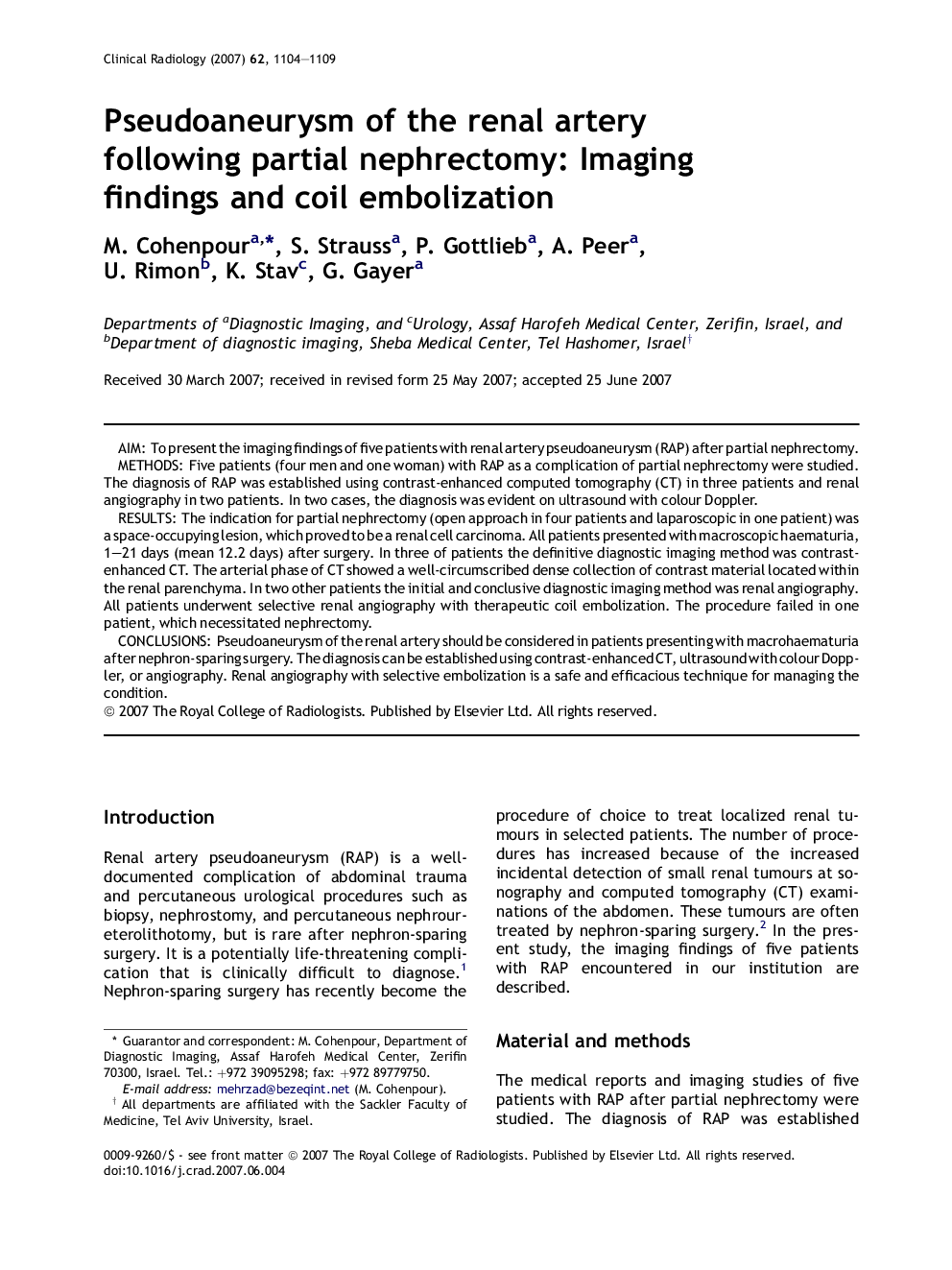| Article ID | Journal | Published Year | Pages | File Type |
|---|---|---|---|---|
| 3983190 | Clinical Radiology | 2007 | 6 Pages |
AimTo present the imaging findings of five patients with renal artery pseudoaneurysm (RAP) after partial nephrectomy.MethodsFive patients (four men and one woman) with RAP as a complication of partial nephrectomy were studied. The diagnosis of RAP was established using contrast-enhanced computed tomography (CT) in three patients and renal angiography in two patients. In two cases, the diagnosis was evident on ultrasound with colour Doppler.ResultsThe indication for partial nephrectomy (open approach in four patients and laparoscopic in one patient) was a space-occupying lesion, which proved to be a renal cell carcinoma. All patients presented with macroscopic haematuria, 1–21 days (mean 12.2 days) after surgery. In three of patients the definitive diagnostic imaging method was contrast-enhanced CT. The arterial phase of CT showed a well-circumscribed dense collection of contrast material located within the renal parenchyma. In two other patients the initial and conclusive diagnostic imaging method was renal angiography. All patients underwent selective renal angiography with therapeutic coil embolization. The procedure failed in one patient, which necessitated nephrectomy.ConclusionsPseudoaneurysm of the renal artery should be considered in patients presenting with macrohaematuria after nephron-sparing surgery. The diagnosis can be established using contrast-enhanced CT, ultrasound with colour Doppler, or angiography. Renal angiography with selective embolization is a safe and efficacious technique for managing the condition.
